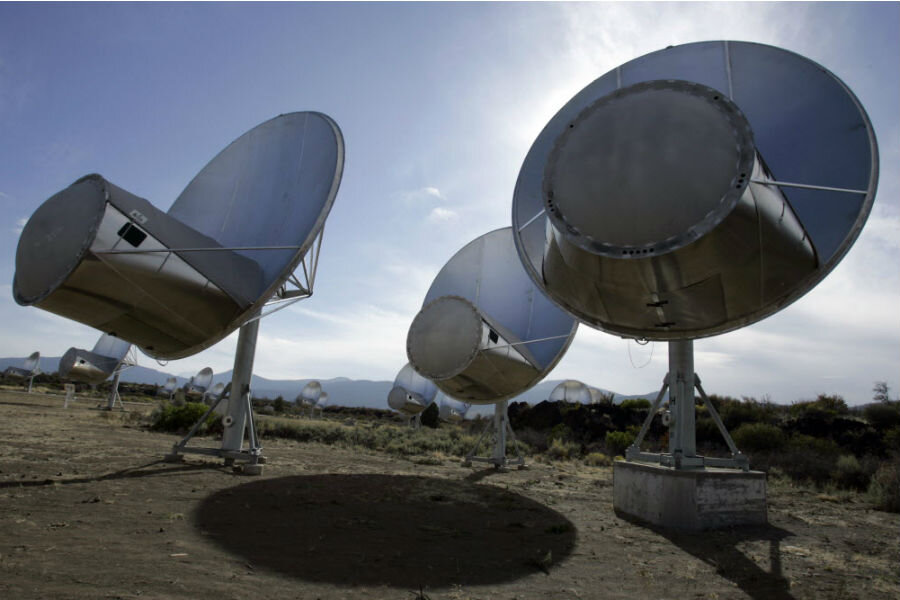What is this mysterious radio signal from space?
Loading...
Finding signs of intelligent life beyond Earth has been a dream of many scientists and science fiction enthusiasts for decades. So since news hit this weekend that a team of Russian astronomers received a mysterious radio signal from space, speculation on the origin of the signal has run rampant.
Is it aliens? Don't count on it. But the strength and nature of the signal are unusual enough that scientists are not ruling out many possibilities.
"Without a confirmation of this signal, we can only say that it's 'interesting,'" Seth Shostak, a senior astronomer at the SETI Institute, wrote in a blog post.
The signal was detected in May 2015 by the RATAN-600 radio telescope in Zelenchukskaya, Russia, not far from the Georgian border of the country, and researchers determined it seems to have come from the vicinity of HD 164595, a star about 94 light-years away.
It is possible that the signal was a fluke caused by some local radio transmission or a natural stellar phenomenon, which has turned out to be the case several times during prior "alien signal" detections. Still, the radio signal was striking enough for the RATAN-600 team to call for permanent monitoring of HD 164595, according to Centauri Dreams, a blog that monitors research related to interstellar exploration.
As it happens, a little is already known about that distant solar system. HD 164595's central star is about the same size and brightness of our sun, though it is a few billion years older. Astronomers have identified one Neptune-sized planet orbiting its sun: too close to support life as we would know it, but there may be other unidentified planets orbiting the star, according to the SETI Institute.
It is possible, however, that researchers could be a little off on the origin of the signal, due to some unusual aspects of the signal's detection. The radio telescope that received the transmission has a bandwidth a great deal larger than extraterrestrial radio detectors usually receive, making it difficult to pin down the exact location of the source.
"Just as a pot pie, incorporating lots of ingredients, can make guessing the individual foodstuffs more difficult, a wide-bandwidth receiver can dilute the strength of relatively strong narrow-band signals," Dr. Shostak writes. SETI's Allen Telescope Array, based in northern California, has now swung in the direction of HD 164595 to see if it can pick up a repeat transmission.
It is unlikely that the signal came from intelligent life, astronomers say; it's merely one of several possibilities that can't yet be ruled out. But if it did, the nature of the signal would have some exciting implications as to what kind of civilization they would be.
A general transmission from HD 164595, sent out in all directions, would have had required 1020 watts to transmit: 100 billion billion watts. If Earth was being targeted, specifically, the energy cost would decrease, but still be more than a trillion watts. That scenario seems unlikely since Earth's own radio and TV transmissions have not arrived at HD 164595 yet, given the distance.
And 100 billion billion watts "is hundreds of times more than all the sunlight falling on Earth," Dr. Shostak told Space.com. "That's a very big energy bill." If aliens did send a transmission from HD 164595, it would require a civilization with energy technology far more advanced than anything that humans have ever developed, as Paul Gilster notes for Centauri Dreams.








